Inside The New York Botanical Garden
Leda Meredith
Posted in From the Library on December 12 2016, by Esther Jackson
Esther Jackson is the Public Services Librarian at NYBG’s LuEsther T. Mertz Library where she manages Reference and Circulation services and oversees the Plant Information Office. She spends much of her time assisting researchers, providing instruction related to library resources, and collaborating with NYBG staff on various projects related to Garden initiatives and events.
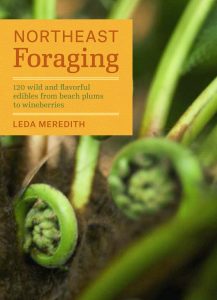 Foraging wild edibles is a lifestyle trend that can’t be ignored. If you’re looking for some guidance about foraging plants, the books below may be just the introduction you are looking for.
Foraging wild edibles is a lifestyle trend that can’t be ignored. If you’re looking for some guidance about foraging plants, the books below may be just the introduction you are looking for.
When learning a new plant in the field, one of the first questions I usually ask is, “Is this edible?” When my botanist companion happens to be there, his answer is typically, “You can eat it,” sometimes followed by a statement about the plant in question not being very tasty, and perhaps that it contains known carcinogens. As a result, I don’t tend to do a lot of foraging. While the practice intrigues me, it also brings to mind a slew of questions. What part of a plant can I eat? What about look-alike plants that are poisonous? How much can I (or should I) gather from a native plant population? Should I forage native plants at all?
Read More
Posted in People on June 4 2014, by Joyce Newman
Joyce H. Newman holds a Certificate in Horticulture from The New York Botanical Garden and has been a Tour Guide for over seven years. She is a blogger for Garden Variety News and the former editor of Consumer Reports GreenerChoices.org.
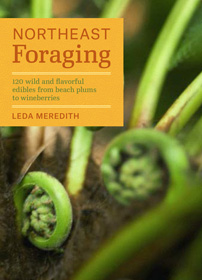 Food expert and NYBG instructor, Leda Meredith, has created an essential field guide out this spring that will enable just about anyone to safely venture out to enjoy the best wild foods in our region.
Food expert and NYBG instructor, Leda Meredith, has created an essential field guide out this spring that will enable just about anyone to safely venture out to enjoy the best wild foods in our region.
Called Northeast Foraging: 120 Wild and Flavorful Edibles from Beach Plums to Wineberries (Timber Press), the book provides invaluable plant lists for each season and area. The lists show when and where (open meadow, woodland, seashore, wetland) to locate delicious, edible plants covering the entire northeast region, from as far south as Maryland, and north to Maine, and even Ontario and Quebec.
Meredith devotes most of the book—262 pages—to detailed plant profiles, with vivid 4-color, close-up photographs and pointed advice on how to cook and preserve each plant. Daylilies, for example, are good for 3-season dishes; wild mint, it turns out, has a great many culinary uses; trendy ramps can be found for free, as can wild strawberries, perhaps the best wild fruit of all. Read on for more tips from the expert herself!
Read More
Posted in Adult Education on March 25 2014, by Leda Meredith
Leda Meredith is the Gardening Coordinator for Adult Education
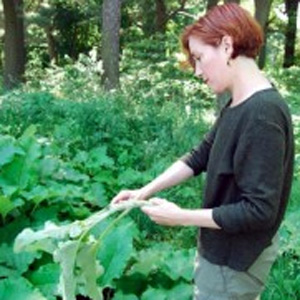 After months of an especially relentless winter, spring is officially here! It’s not only the time when sunshine and blossoms beckon, but also when we need to get busy in the garden. The gardening you do now will determine the success of your landscape through summer and even into fall. Tasks to tackle can include anything from preparing your soil for the coming year to making the leap toward designing a pollinator-friendly garden. For those of you more concerned with indoor plants, it might be time to think about a spring repotting!
After months of an especially relentless winter, spring is officially here! It’s not only the time when sunshine and blossoms beckon, but also when we need to get busy in the garden. The gardening you do now will determine the success of your landscape through summer and even into fall. Tasks to tackle can include anything from preparing your soil for the coming year to making the leap toward designing a pollinator-friendly garden. For those of you more concerned with indoor plants, it might be time to think about a spring repotting!
Whatever your focus, NYBG’s Adult Education courses offer you plenty of opportunities to become a better gardener. They might even give you the confidence to try something entirely new in your home garden. Here are my picks for the classes that will give you the skills you need for your best gardening year ever:
Read More
Posted in Adult Education on February 28 2014, by Leda Meredith
Leda Meredith is the NYBG Gardening Coordinator and author of the forthcoming book Northeast Foraging: 120 Wild and Flavorful Edibles.
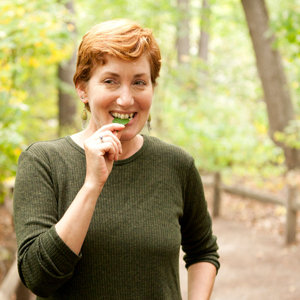 Finally, it’s just about March, and we can stop dreaming about gardening and actually get going! Whether you’re a novice to the gardening game or a dyed-in-the-wool green thumb, pre-season education and preparation can go a long way. That’s where the NYBG’s Spring Adult Education classes come into play.
Finally, it’s just about March, and we can stop dreaming about gardening and actually get going! Whether you’re a novice to the gardening game or a dyed-in-the-wool green thumb, pre-season education and preparation can go a long way. That’s where the NYBG’s Spring Adult Education classes come into play.
Here are my top picks for classes that will help make 2014 your best gardening season ever. I’ll be back next month with April picks, so be sure to keep an eye on Plant Talk for upcoming courses and workshops that you won’t want to miss!
Read More
Posted in Adult Education on September 19 2013, by Matt Newman
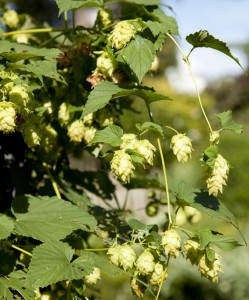 At its core, botany revolves around the study of plants and how they function, all in order to appreciate the massive role they play in our lives. Maybe that causes your brain to jump to associations with greenhouses and laboratories. But, just for a second, step away from the thought of picking your way through a hothouse or leaning over a microscope and consider the industries and passions that rely on plant knowledge to exist. Without some understanding of botany under the brewer’s belt, your go-to dive bar would like as not be non-existent. And the organic lotions, infusions, and supplements sold for a premium in body boutiques around the city wouldn’t be an issue, either. Not many people understand this quite so well as our Adult Education staff.
At its core, botany revolves around the study of plants and how they function, all in order to appreciate the massive role they play in our lives. Maybe that causes your brain to jump to associations with greenhouses and laboratories. But, just for a second, step away from the thought of picking your way through a hothouse or leaning over a microscope and consider the industries and passions that rely on plant knowledge to exist. Without some understanding of botany under the brewer’s belt, your go-to dive bar would like as not be non-existent. And the organic lotions, infusions, and supplements sold for a premium in body boutiques around the city wouldn’t be an issue, either. Not many people understand this quite so well as our Adult Education staff.
You can even relate this to your favorite stories. A famous if apocryphal anecdote attributed to the writer Vladimir Nabokov tells of a student who declares, in Nabokov’s office, that he wants to be a writer. Nabokov glances up and points out the window. “What kind of tree is that?” he asks. “I don’t know,” says the student. “Then you’ll never be a writer.”
A harsh lesson, maybe, but the fact stands that botany influences our lives more often than we give it credit for, be it tangibly or in the small, creative details that make up the world around us. Thankfully, our instructors aren’t nearly so brutal as Nabokov, and our botany courses offer fun, down-to-earth routes to engage the immense importance of plants.
Read More
Posted in Around the Garden on June 22 2012, by Matt Newman
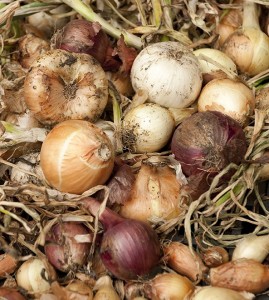 I read in the paper (I’ll give them up the minute subway tunnels offer 4G) that Wednesday’s thermometer topped out at 110 degrees Fahrenheit in Times Square, placing New York City’s temperatures almost on par with those of Dubai. We’re better off at the NYBG, of course; lush grass and acres of shady trees tamp down the heat some. But don’t get me wrong, Manhattanites–it’s not like I’m trying to rub it in or anything. Not really.
I read in the paper (I’ll give them up the minute subway tunnels offer 4G) that Wednesday’s thermometer topped out at 110 degrees Fahrenheit in Times Square, placing New York City’s temperatures almost on par with those of Dubai. We’re better off at the NYBG, of course; lush grass and acres of shady trees tamp down the heat some. But don’t get me wrong, Manhattanites–it’s not like I’m trying to rub it in or anything. Not really.
There’s an upside to summer in the city beyond fruity cocktails and flip-flops, and it’s none other than “Sweet and Stinky,” launched just this week to celebrate the passing of the solstice. As an amateur chef, albeit one paradoxically awful and ambitious, I feel like this is the kind of hot-weather activity every cook-out fan should get in on. This stuff smells heavenly with some heat behind it.
“If you’re walking around the Garden and you smell sauteed onions, you’ll know it’s us!” said Annie Novak, Assistant Manager of the Ruth Rea Howell Family Garden.
Read More
Posted in Uncategorized on July 22 2009, by Plant Talk
Leda Meredith holds a Certificate in Ethnobotany from the Botanical Garden, is author of Botany, Ballet, & Dinner from Scratch: A Memoir with Recipes, and hosts her own blog, Leda’s Urban Homestead.
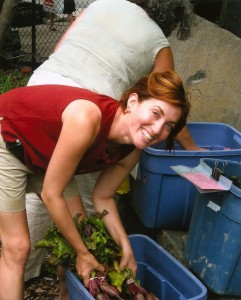 When I set out to eat almost exclusively food grown within 250 miles of New York City, I had a lot of questions. I knew that eating a local-foods diet would reduce my carbon footprint as well as support small local farms and the local economy. I knew from my visits to farmers markets and from growing vegetables in a community garden how fabulous fresh food picked at its peak could be. But…
When I set out to eat almost exclusively food grown within 250 miles of New York City, I had a lot of questions. I knew that eating a local-foods diet would reduce my carbon footprint as well as support small local farms and the local economy. I knew from my visits to farmers markets and from growing vegetables in a community garden how fabulous fresh food picked at its peak could be. But…
All of the other locavores I’d read about, including Barbara Kingsolver and Michael Pollan, had advantages over me when it came to eating local. They lived in a mild climate with a longer agricultural season, or had huge gardens or even farms. What I wanted to find out was could it be done by someone living in a tiny apartment on a limited budget, and with a hectic, multi-employer urban lifestyle? And what would I eat in winter?
I discovered that it is completely possible to eat a deliciously varied and healthy local foods diet in NYC without breaking the bank or requiring a 28-hour day. Local, organic food can be pricey, but it doesn’t have to be. There are ways to make a local foods diet almost as convenient as picking up the phone to order takeout or delivery.
Read More
 Foraging wild edibles is a lifestyle trend that can’t be ignored. If you’re looking for some guidance about foraging plants, the books below may be just the introduction you are looking for.
Foraging wild edibles is a lifestyle trend that can’t be ignored. If you’re looking for some guidance about foraging plants, the books below may be just the introduction you are looking for.





